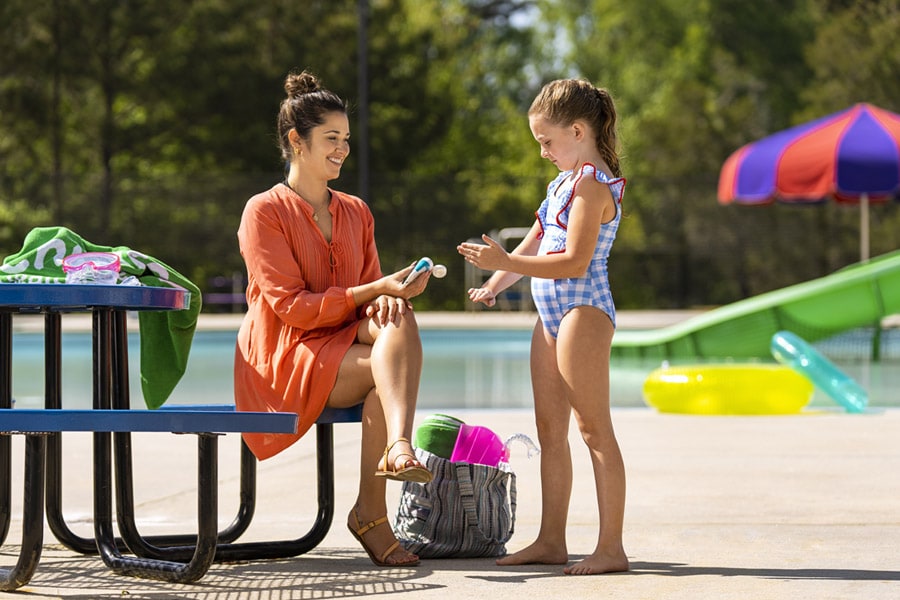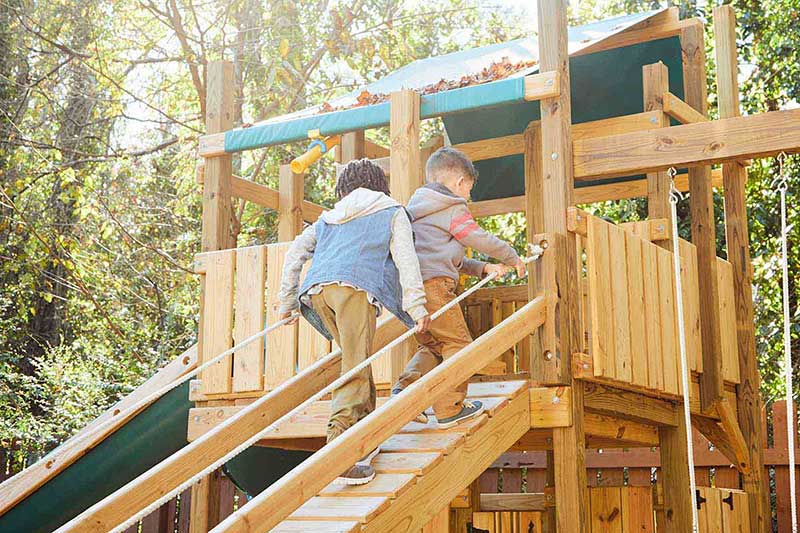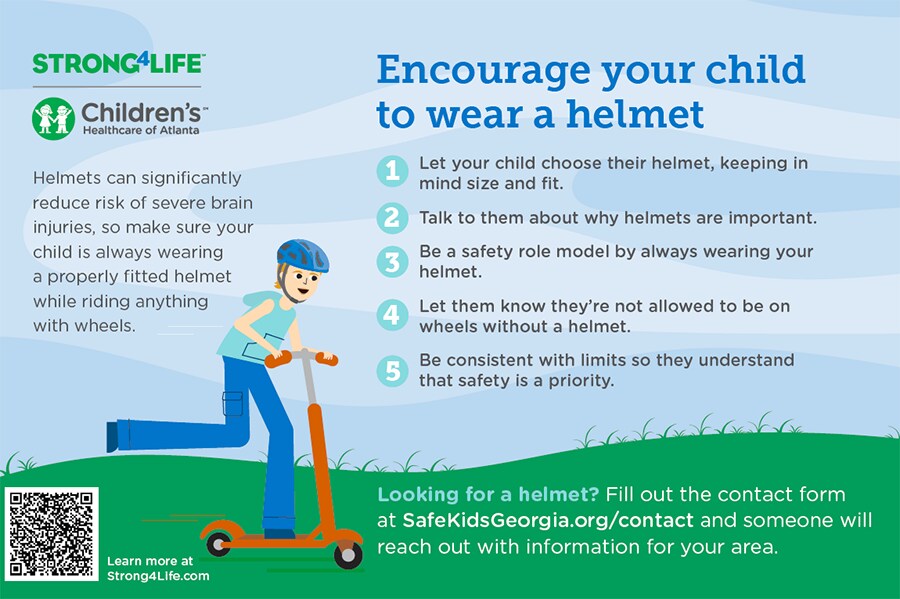Guide to Kids’ Helmets: Size, Fit and Safety Tips
From toddlerhood through the teenage years, riding bikes, skates and scooters is a fun way for kids to be active. But before they dash out the door, it’s important to make helmet safety a priority.
According to Safe Kids Worldwide, nearly 50 kids visit an emergency department every hour in the U.S. due to injuries on bikes, scooters, skateboards and skates. And wearing a helmet can significantly reduce the chances of traumatic injury.
Our top helmet safety tip? Make safety on wheels a habit as early as possible. Read on for more advice from our experts.
In this article:
How do I know what size helmet to buy my child?
Any time your child is on wheels, they need to wear a properly fitted helmet to protect them from severe head injuries. The benefits of wearing a helmet are clear, but proper size and fit can be a little tricky.
Here’s how to shop for kids’ helmets:
- Look for helmets that meet safety standards. Check the outside and inside of helmets for stickers that show they have been approved by the American National Standards Institute and the U.S. Consumer Product Safety Commission.
- Check to ensure you’re buying the right size. Many stores will include an age range for kids’ helmets. For an even better fit, use a measuring tape (or a string and ruler) to measure the diameter of your child’s head before purchasing.
- If possible, get a new helmet just for your child. If you buy used or are offered a hand-me-down, be sure the helmet is not damaged. If you need a helmet for your child, consider requesting one from your local Safe Kids coalition.
- Know which helmet to use for different activities. There are a variety of helmet styles, including those for biking, horseback riding, football, softball and other sports, so ensure your child is wearing the right one for each activity.
Once you have a helmet for your child, check its expiration date. Just like car seats, they don’t last forever. They typically expire within 5 years.
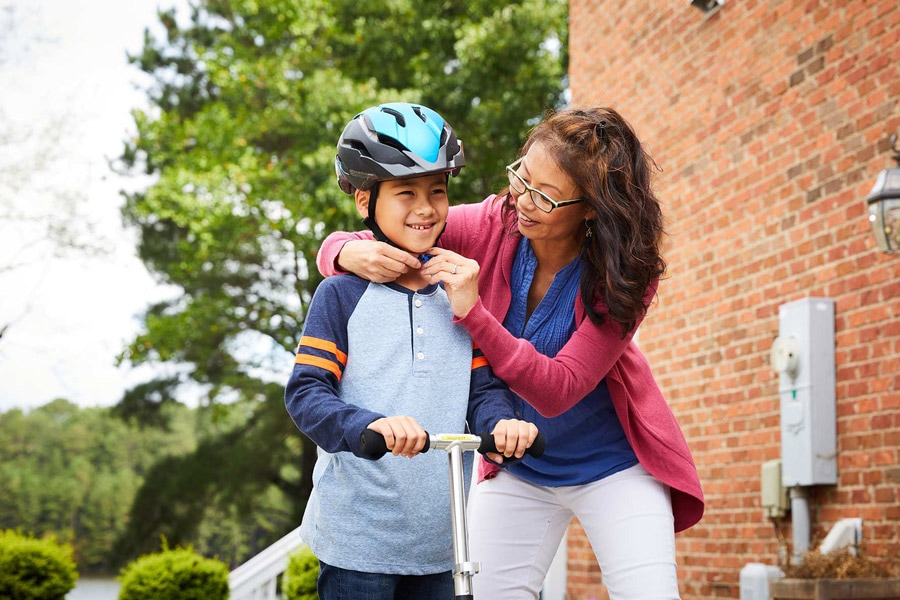
How do I know if my child's helmet fits properly?
If your child’s helmet doesn’t fit properly, it will not be as effective at preventing injuries. So ensuring your child’s helmet fits is just as important as encouraging them to wear one.
To ensure proper helmet fit for your child, make sure:
- The helmet fits snugly on their head. Try the shake test: With the straps unbuckled, ask your child to shake their head. If the helmet doesn’t slide around, you have a good fit.
- The front edge of the helmet sits low. The helmet should sit 2 finger widths above your child’s eyebrows.
- The chin strap is snug when your child opens their mouth. There should only be room for 1 finger between their chin and the strap.
- The front and back straps form a V just below the ear. The front straps should be vertical and positioned slightly in front of the ears.
Did you know hairstyles can affect how your child’s helmet fits? A good rule of thumb is to keep long ponytails and bulky buns and braids lower, toward the nape of the neck. This is why it’s important to check and adjust your child’s helmet before each ride.
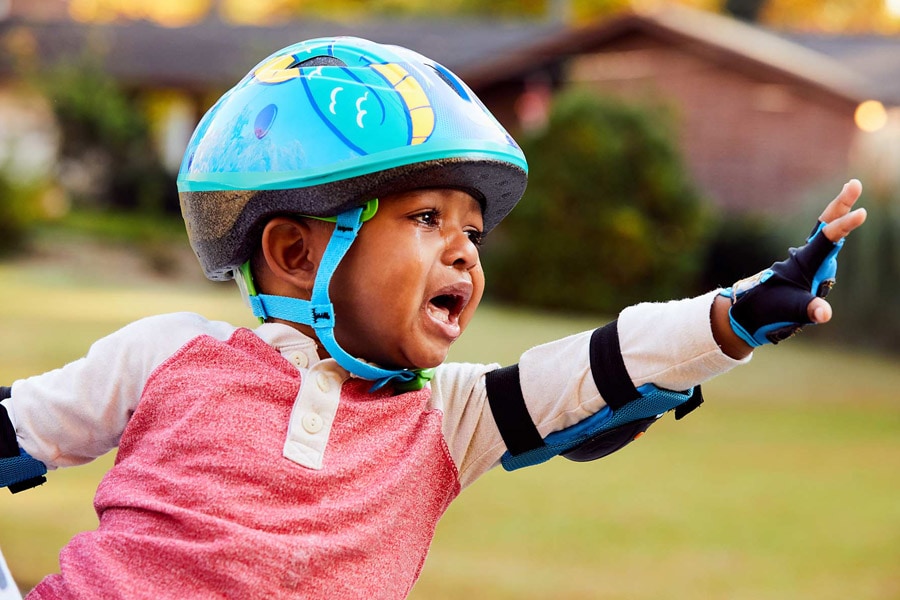
How do I get my child to wear a helmet?
It’s easier to encourage bike safety and helmet safety for kids if you start forming the habit at a young age. But it’s never too late to make safety on wheels a priority.
Remember, kids must wear a helmet any time they’re on wheels—no exceptions. Whether they’re in the driveway, on the road, inside the house, at a friend’s house or they’re only riding “for a minute,” they should wear a properly fitting helmet.
Here are our top tips for motivating kids to wear helmets:
- Let your child choose. Your job is to ensure the helmet is the right size and fit, but letting your child pick out their helmet could help them get on board with your safety efforts.
- Show them safety role models. From superheroes to pro athletes, the coolest people wear helmets. In many pro sports, and even in the Olympics, helmets are required.
- Model good safety habits yourself. If you go on family bike rides, model the same habits you’re encouraging for your kids. They’re more likely to follow guidelines if they see others practicing them.
- Talk to them about why it’s important. Talk to your child about the benefits of helmet safety in a way they can understand. For toddlers, you may say that their brain could get hurt so it needs protection. For school-age kids and teens, you may talk to them about serious injury and statistics. You can tell them that helmets not only reduce the risk of brain injury, but also reduce the risk of facial scrapes and fractures.
- Set healthy limits. If your child is resisting wearing a helmet, set a clear expectation that they are not allowed to ride without one. Try to stay calm but firm. Limits like this help kids know what is expected, which can actually make them feel more safe and secure.
- Be consistent. If you set a limit, be consistent. If you occasionally allow them to ride without a helmet, they won’t understand the importance of making safety a priority.
What are some other bike safety tips for kids?
Apart from always wearing a helmet, here are a few other ways to keep them safe while they’re on their bike:
- Find the right bike. Kids can’t properly ride a bike that is too big or small, and they could lose control. Additionally, make sure your child’s bike has brakes. Younger children should have foot brakes because they don’t have the coordination or judgment to use hand brakes.
- Pay attention to surroundings. Talk with your child about staying alert and aware while riding. They should keep both hands on the handlebars and pay attention so they can avoid potential dangers, such as holes or curbs, pedestrians, other cyclists and cars. They should also avoid using phones or other devices when biking.
- Supervise while they learn. Until you are comfortable with their skill level, you should supervise kids while they ride their bike, scooter or skateboard. Pay close attention and eliminate distractions.
- Know when to let them ride alone. Most kids aren’t ready to bike alone to places like school or the playground until they are about 10 years old, according to the American Academy of Pediatrics. At that point, they can understand what precautions they should take. However, each child develops at a different rate, and you know your child best, so assess for yourself and make the decision when you’re ready.
If your child has an injury or is showing signs of illness, call your doctor or visit an urgent care center. If your child has a life-threatening injury or illness, is having trouble breathing or is unconscious, call 911 and/or visit an emergency department immediately.
